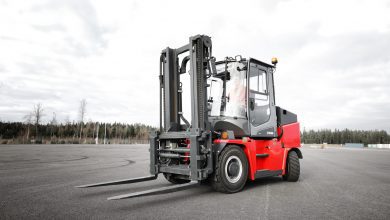
The 10 Best Dental Hygiene Instruments And Why You Need Them!
Dental hygiene is an essential part of maintaining overall health and well-being. Good oral hygiene habits, such as brushing and flossing regularly, can help prevent tooth decay, gum disease, and bad breath.
However, sometimes basic dental hygiene tools may not be enough to keep your teeth and gums clean and healthy. That’s where dental hygiene instruments come in. In this blog post, we’ll discuss the 10 best dental hygiene instruments and why you need them.
Section 1: Basic dental hygiene instruments
Toothbrush
A toothbrush is a dental hygiene tool that is used to clean teeth and remove plaque and bacteria from the surface of teeth. It is essential to brush your teeth twice a day to prevent tooth decay and gum disease. There are two main types of toothbrushes – manual, and electric.
- Manual toothbrushes come in different sizes, shapes, and bristle types. A soft-bristled toothbrush is the best option for most people because it is gentle on the teeth and gums. A small head toothbrush can reach all the areas of the mouth, including the back teeth. Manual toothbrushes are affordable and widely available.
- Electric toothbrushes are becoming increasingly popular because they can clean teeth more effectively than manual toothbrushes. They come with different brush heads, timers, and pressure sensors. Some electric toothbrushes also have Bluetooth connectivity, which can track brushing habits and provide feedback.
Dental floss
Dental floss is a thin thread that is used to clean between teeth where toothbrushes cannot reach. Flossing helps remove plaque and bacteria from the tight spaces between teeth, preventing tooth decay and gum disease. There are two main types of dental floss – waxed and unwaxed.
Waxed dental floss is coated with wax, making it easier to slide between teeth. It is less likely to shred and break than unwaxed dental floss. Unwaxed dental floss is made of nylon or silk and is suitable for people with tight spaces between their teeth.
There are also different types of dental floss, such as flavored floss, floss picks, and water flossers. Flavored floss can make flossing more enjoyable, while floss picks can be easier to use for people with limited mobility. Water flossers use a stream of water to clean between teeth, making them a great option for people with braces or dental implants.
Mouthwash
Mouthwash is a liquid oral hygiene product that can help freshen breath, kill bacteria, and prevent gum disease. There are two main types of mouthwash – therapeutic and cosmetic.
Therapeutic mouthwash contains active ingredients such as fluoride, chlorhexidine, or hydrogen peroxide, which can help prevent cavities, reduce plaque, and kill bacteria. Cosmetic mouthwash, on the other hand, is designed to freshen your breath and improve the taste of the mouth. It does not contain any active ingredients.
Mouthwash comes in different flavors and can be alcohol-based or alcohol-free. Alcohol-based mouthwash can be effective in killing bacteria but may cause a burning sensation in the mouth. Alcohol-free mouthwash is suitable for people with sensitive teeth and gums.
Overall, toothbrushes, dental floss, and mouthwash are essential dental hygiene tools that can help maintain oral health. Using them regularly and correctly can prevent tooth decay and gum disease and promote a healthy smile.

Section 2: Advanced dental hygiene instruments
Tongue scraper
A tongue scraper is a tool used to clean the tongue’s surface, removing bacteria and debris that can cause bad breath. Using a tongue scraper regularly can also help improve taste sensation and overall oral health. There are different types of tongue scrapers, such as plastic, metal, and silicone.
Plastic tongue scrapers are affordable and widely available, but they may not be as effective as metal or silicone scrapers. Metal tongue scrapers are durable and easy to clean, but they can cause discomfort if used incorrectly. Silicone tongue scrapers are gentle on the tongue and can be suitable for people with sensitive mouths.
Interdental brush
An interdental brush is a small brush designed to clean between teeth and remove plaque and debris from tight spaces. It is a useful tool for people with gaps between their teeth, braces, or dental implants. Interdental brushes come in different sizes, shapes, and bristle types.
The size of the interdental brush should be chosen based on the space between the teeth. A small brush is suitable for tight spaces, while a larger brush can clean wider gaps. The shape of the brush should also be considered, with some brushes having angled heads for easier access to hard-to-reach areas.
The bristle type of interdental brush can be soft, medium, or hard. Soft bristles are recommended for most people because they are gentle on the teeth and gums. Hard bristles can damage the enamel and cause gum recession.
Water flosser
A water flosser, also known as an oral irrigator, is a device that uses a stream of water to clean between teeth and along the gumline. It is a great alternative to traditional dental floss for people with braces, bridges, or dental implants. Water flossers come in different types, such as countertops and cordless.
Countertop water flossers are larger and come with a reservoir that needs to be filled with water. Cordless water flossers are smaller and operate on batteries. Both types of water flossers come with different settings, such as pressure and pulsation modes.
Using a water flosser regularly can remove plaque and bacteria from the gum line, reducing the risk of gum disease and promoting overall oral health. Water flossers can also be used with mouthwash for added benefits.
Overall, tongue scrapers, interdental brushes, and water flossers are advanced dental hygiene instruments that can improve oral health and prevent dental problems. Using these tools in combination with basic dental hygiene tools can lead to a healthier and brighter smile.
Section 3: Professional dental hygiene instruments
Ultrasonic scaler
An ultrasonic scaler is a professional dental tool that uses high-frequency vibrations to remove plaque and calculus from the teeth. It is commonly used during dental cleanings and can be beneficial for people with heavy plaque buildup or periodontal disease.
There are two main types of ultrasonic scalers: magnetostrictive and piezoelectric. Magnetostrictive scalers use magnetic fields to vibrate the tip of the instrument, while piezoelectric scalers use crystals to create high-frequency vibrations.
Ultrasonic scalers have several features that make them effective in removing tartar and other dental debris. These features include different tip shapes and sizes for accessing hard-to-reach areas, adjustable power settings, and water irrigation to cool the instrument and flush out debris.
Dental mirror
A dental mirror is a small, handheld tool used by dentists and dental hygienists to view the inside of the mouth. It is often used to examine teeth, gums, and other soft tissues for signs of decay, disease, or other problems.
Dental mirrors come in different types, such as single-sided or double-sided mirrors, and can have different shapes and sizes. They are typically made of metal, with a reflective surface on one end and a handle on the other.
Dental mirrors have several features that make them useful for dental professionals. These features include the ability to reflect light into the mouth for better visibility, a non-slip grip for better control, and a range of angles for different viewing perspectives.
Dental explorer
A dental explorer is a tool used by dental professionals to detect dental caries or cavities. It has a long, thin metal tip that can be gently inserted into the grooves and crevices of the teeth to detect soft or sticky spots that may indicate decay.
Dental explorers come in different types, such as straight or curved tips, and can have different lengths and thicknesses. They are typically made of metal, with a sharp, pointed tip and a handle for easy manipulation.
Dental explorers have several features that make them effective in detecting dental caries. These features include a sharp tip for detecting soft or sticky spots, a non-slip grip for better control, and a range of tip sizes and shapes for different areas of the mouth.
Overall, ultrasonic scalers, dental mirrors, and dental explorers are professional dental hygiene instruments that can help dental professionals diagnose and treat dental problems. Regular dental check-ups and professional cleanings can help prevent dental problems and ensure optimal oral health
Conclusion
In summary, dental hygiene instruments are essential for maintaining good oral hygiene and preventing tooth decay, gum disease, and bad breath. The 10 best dental hygiene instruments are the toothbrush, dental floss, mouthwash, tongue scraper, interdental brush, water flosser, ultrasonic scaler, dental mirror, and dental explorer. Each of these instruments has its unique benefits and uses. It is essential to use them correctly and regularly to achieve the best results.
In addition to using dental hygiene instruments at home, it is crucial to have regular dental check-ups and professional cleanings. Dental professionals can detect and treat dental problems early on, preventing them from becoming more serious and expensive to treat. By incorporating the 10. Visit Norfolks for more Details





